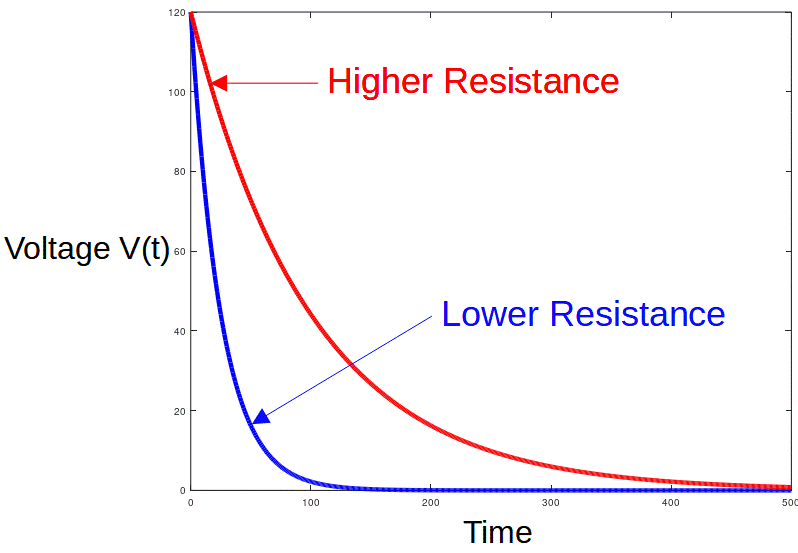Bleeder Resistor
Bleeder resistors are common components in many circuits that contain capacitors.
The purpose of a bleeder resistor is to allow the safe discharge of capacitors when a circuit is disconnected from the power source.
A bleeder resistor is a high value (high ohms) resistor that is generally connected in parallel with other components, providing a path to ground for any stored charge within a circuit.
Bleeder Resistor Circuit

Bleeder resistors are common in power supply (rectifier) filter circuits, which commonly contain large smoothing capacitors. They are used to prevent accidental injury or damage from capacitor discharge when the power supply is disconnected.
Discharge Formula Through a Bleeder Resistor
Capacitors are excellent at storing charge, an attribute that also makes them dangerous. In many systems, charged (or potentially charged) capacitors present the greatest risk of injury or damage when
The main function of a bleeder resistor is to allow the circuit to safely discharge when the circuit is disconnected from the main power supply.
In this situation, the circuit functions as a basic RC series circuit. The voltage across the capacitor depends on the value of the initial voltage V0, the total resistance R, and the total capacitance C. The value of the voltage V(t) (voltage as a function of time) is given by:
V(t)=V_0e^{-\frac{t}{RC}}If we plot this discharge function, we can see that the capacitor will eventually discharge, but that the greater the resistance or capacitance, the longer it will take.
This means that a larger bleeder resistor will take longer to discharge.

It might therefore seem logical to choose a low value resistor, but the circuit designer must also take into account the power dissipated across the bleeder resistor during normal operation.
Bleeder Resistor Safety vs. Efficiency
The current through the bleeder resistor is determined by Ohm’s Law, which means that a lower value resistor will allow a higher current to pass through it.
The more current that passes through the resistor during normal operation, the greater the efficiency loss. Maximizing efficiency therefore requires a higher value resistor in order to restrict the current during normal operation. In addition, the ratio of loss through the bleeder resistor depends significantly on the load resistance. If the load resistance approaches or exceeds the bleeder resistance, a large percentage of the electric power will be dissipated across the bleeder resistor instead of the load.
On the other hand, a high bleeder resistance value increases the time required for the circuit to discharge when disconnected.
Thus there is always a tradeoff between the safety afforded by the bleeder resistor and the efficiency loss caused by it.
For many applications, however, it may be assumed that any internal maintenance will be performed a) after a suitable length of time has passed, and b) by trained persons who are aware of the dangers of unplanned discharge and who would intentionally discharge capacitors manually. Resistors, including bleeder resistors can fail so the wise technician assumes nothing and takes all possible precautions. These factors mean that in general, a large resistor with a high ohmic value can often be chosen to mitigate power losses during normal operation.
When designing a circuit, the size of the bleeder resistor should be carefully selected to ensure that the circuit will safely discharge within a pre-determined time frame.